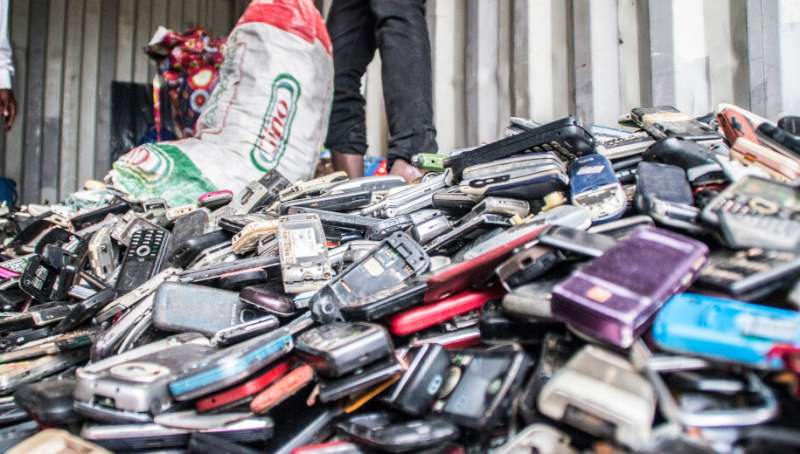COVID widens digital divide, but cuts e-waste

Consumption of electronic and electrical equipment at the start of the COVID-19 pandemic fell in low- and middle-income countries by almost a third, according to a UN report, despite a growing need to be connected with the world in lockdown.
While the reduction means that millions of tons of potential e-waste has been saved, it also highlights a deepening of the north-south digital divide, said the report, published 9 June by the UN University's (UNU) Sustainable Cycles Program (SCYCLE) and UN Institute for Training and Research (UNITAR).
The report analyzed electric and electronic equipment consumption during the first three quarters of 2020 as compared to the "business as usual" scenario before the pandemic and used it to estimate future e-waste.
The report projected that lower sales of electric and electronic equipment in the first three quarters of 2020 will lead to reduction of 4.9 million metric tons of e-waste in the next five to 15 years. Working, studying, gaming and entertaining at home did not increase consumption for everyone as widely believed.
Countries of Northern Africa, Western Asia, Sub-Saharan Africa, and Central Asia were the hardest hit as electric and electronic equipment sales in low- and middle-income countries declined by 30 percent compared to only five percent fall in developed countries, the report notes.
Ruediger Kuehr, report co-author and director of the SCYCLE Program and head of the UNITAR office in Bonn, Germany, says that the digital divide is increasing."The ability to adapt to digitisation and earn a living or simply to own and benefit from electronics is decreasing in some parts of the world."
"In recent years, the growing middle class was a key-driver in the consumption of electronic equipment in low- and middle-income countries. This is falling short now, because this middle class is also suffering most from economic impacts of COVID-19. Many have lost their jobs, are in short-time work or expect upcoming economic problems," Kuehr tells SciDev.Net.
Inequality has been compounded worldwide with half a billion people now underemployed or out of work due to COVID-19, affecting women twice as badly as men. Workers in low-income countries suffer most, losing 23 percent of their working hours, the report notes.
Global sales of the heavy electronic appliances, such as refrigerators, washing machines and air-conditioners, fell the hardest worldwide between six and eight percent while small IT and telecommunication equipment, including mobile phones, laptops and gaming equipment, decreased only by 1.4 percent.
A small silver lining is the associated reduction in e-waste generation in low- and middle-income countries, many of which have no or inadequate e-waste management infrastructure in place leading to environmental and health hazards.
Kees Baldé, report co-author and senior program officer, UNU and UNITAR, says that one way to redress the digital divide is to start programs to get low- and middle-income countries connected and benefit from the use of electric and electronic equipment.
"At the same time, ensure that associated e-waste is properly dealt with through making producers liable and responsible to collect and properly manage the e-waste; and getting the legislators to pass laws and pave the path to set up an e-waste management infrastructure," he tells SciDev.Net.
Global e-waste is estimated to double in the next 30 to 50 years. In 2019, the global population created 53.6 million tons (MT) of e-waste. Asia generated the greatest volume of 24.9 MT e-waste, followed by the Americas (13.1 million MT) and Europe (12 MT), while Africa and Oceania generated 2.9 MT and 0.7 MT respectively, according to the UN's Global E-waste Monitor 2020.
Veena Sahajwalla, director, Center for Sustainable Materials Research and Technology (SMaRT) at the University of New South Wales, sees this period of reduction in e-waste as an opportunity for developing countries to better manage it.
"E-waste contains valuable materials," Sahajawalla tells SciDev.Net. "Better managing these finite material resources will not only help solve waste challenges, but also harness these materials to sustainably meet present and future needs as we move away from high carbon emitting energy sources.
More information: Impact of the COVID-19 Pandemic on E-Waste the First Three Quarters of 2020: www.scycle.info/wp-content/upl … _landscape_final.pdf
Provided by SciDev.Net



















